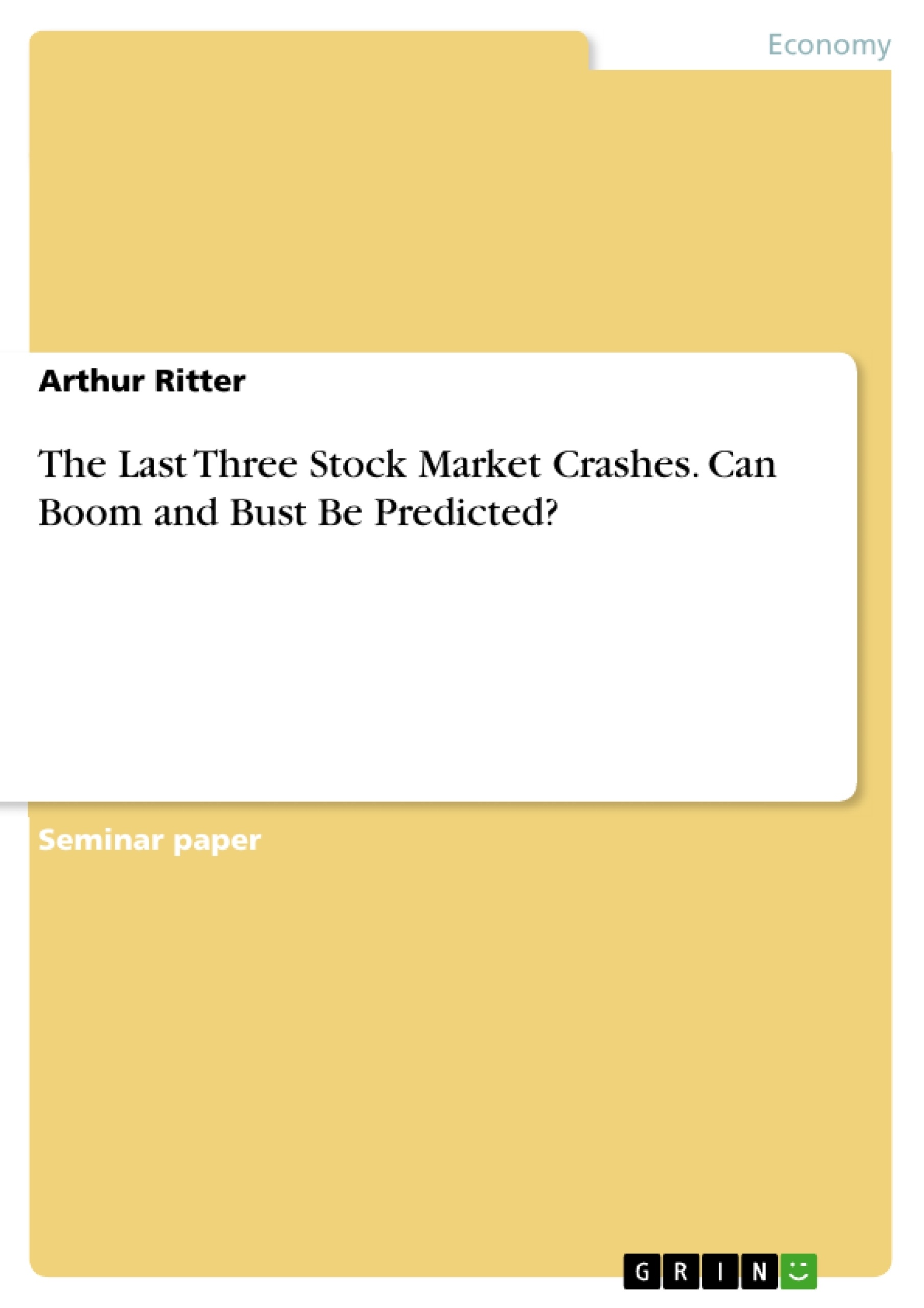Stock market crashes had occurred in the financial market since the very beginning and in every generation (Sornette, 2003a). “Greed, hubris and systemic fluctuations have given us the Tulip Mania, the South Sea bubble, the land booms in the 1920s and 1980s, the U.S. stock market and great crash in 1929, the October 1987 crash, to name just a few of the hundreds of ready examples“ (Sornette, 2003a, p. 7.).
This essay will compare and contrast the last three major stock market crashes in 1987, 2000 and 2007. To do this, the essay will pay special emphasis on the causes of the three crashes. From there the essay will draw out the similarities and differences and will answer the question if boom and bust can be predicted.
Inhaltsverzeichnis (Table of Contents)
- INTRODUCTION
- STOCK MARKET CRASH IN 1987 - BLACK MONDAY
- CAUSES
- THE STOCK MARKET CRASH IN 2000 - .COM BUBBLE
- CAUSES
- THE STOCK MARKET CRASH IN 2007 - THE MORTGAGE CRISIS
- CAUSES
- COMPARISON AND CONTRAST
- COMPARISON
- CONTRAST
- CONCLUSION - CAN BOOM AND BUST BE PREDICTED?
Zielsetzung und Themenschwerpunkte (Objectives and Key Themes)
This essay aims to compare and contrast the last three major stock market crashes in 1987, 2000, and 2007, focusing on the causes of each event. By analyzing the similarities and differences, the essay seeks to answer the question of whether boom and bust cycles in the stock market can be predicted.
- Causes of stock market crashes
- Similarities and differences between crashes
- Predictability of boom and bust cycles
- Role of financial innovation and deregulation
- Impact of overvaluation and market liquidity
Zusammenfassung der Kapitel (Chapter Summaries)
The essay begins by introducing the concept of stock market crashes and highlighting their historical prevalence. It then delves into the specific events of the 1987 crash, known as Black Monday, examining its causes, including program trading, financial innovation, illiquidity, trade deficits, and overvaluation.
The chapter on the 2000 crash, attributed to the .com bubble, explores the factors that contributed to its formation and subsequent burst. These factors include overvaluation of tech stocks, financial innovation, and the emergence of new business models.
Finally, the essay discusses the 2007 crash, linked to the mortgage crisis. It analyzes the causes, including subprime mortgages, lax lending standards, and the complex interplay of financial instruments.
Schlüsselwörter (Keywords)
Stock market crashes, Black Monday, .com bubble, mortgage crisis, financial innovation, deregulation, overvaluation, illiquidity, program trading, derivatives, boom and bust cycles, predictability.
- Citar trabajo
- Arthur Ritter (Autor), 2014, The Last Three Stock Market Crashes. Can Boom and Bust Be Predicted?, Múnich, GRIN Verlag, https://www.grin.com/document/299134
-

-

-

-
¡Carge sus propios textos! Gane dinero y un iPhone X. -

-
¡Carge sus propios textos! Gane dinero y un iPhone X. -

-
¡Carge sus propios textos! Gane dinero y un iPhone X. -

-
¡Carge sus propios textos! Gane dinero y un iPhone X. -

-
¡Carge sus propios textos! Gane dinero y un iPhone X.

